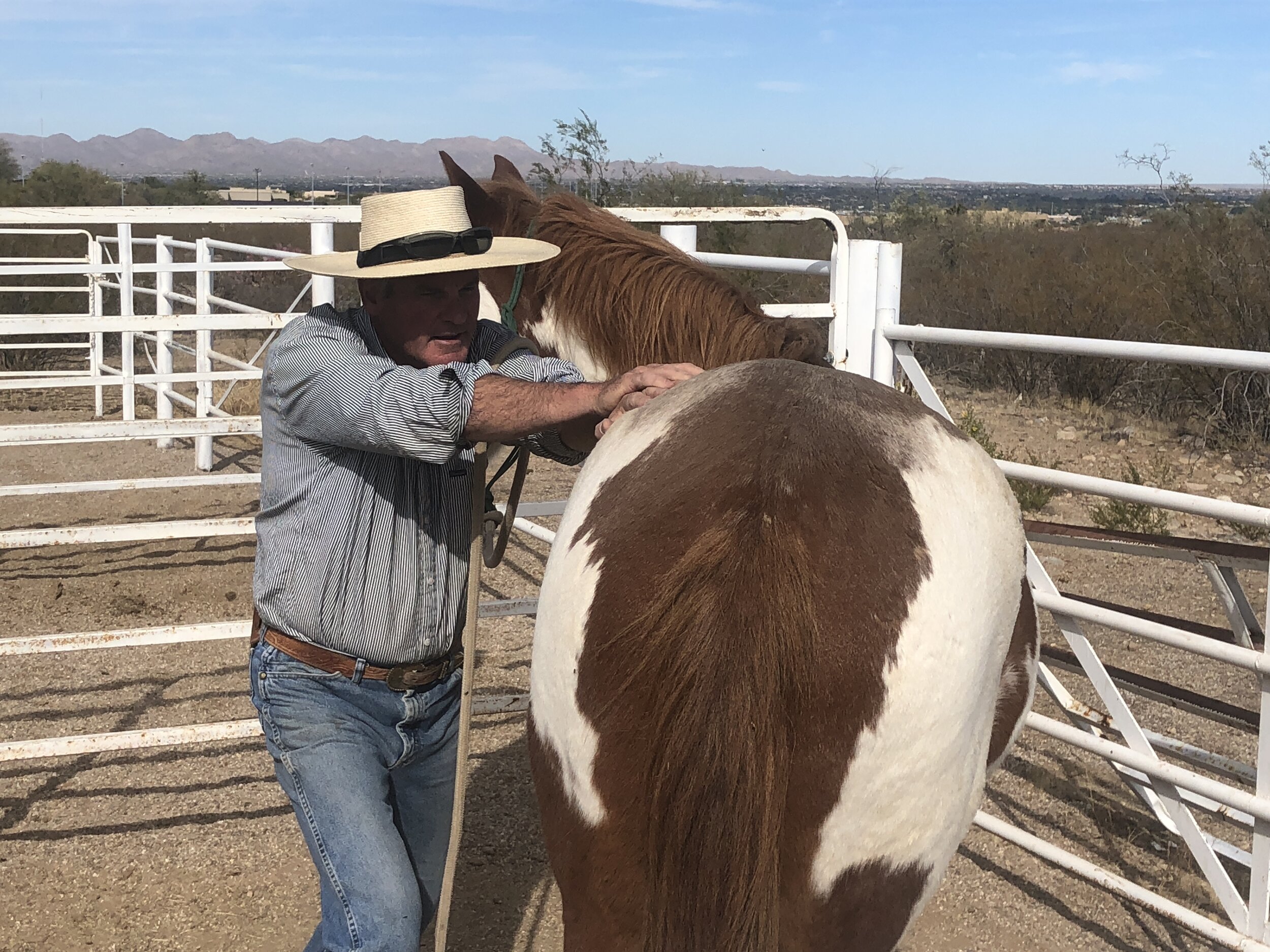
What is Equine Chiropractic?
Some important information before making an appointment
Here’s a great article y Kevin Haussler, DVM, DC, Ph.D. that gives a clear idea of what equine chiropractic is all about.
CHIROPRACTIC PRINCIPLES
The word chiropractic is derived from the Greek words cheir meaning “hand” and praktike meaning “business or to practice.” The practice of chiropractic focuses on the relationship between structure (primarily the vertebral column) and function (as coordinated by the nervous system) and how that relationship affects health. Chiropractic is a form of manual therapy that uses controlled forces applied to specific joints or anatomic areas to cause a healing response. This response is due to changes in joint structures, muscle function and neurologic reflexes. The principle common to all chiropractic theories is that joint malfunction affects the normal neurological balance found in healthy individuals. The theory of a “bone out of place” is outdated and not supported by current spinal research.
The goals of chiropractic treatment are to restore normal joint motion, stimulate nerve reflexes and reduce pain and abnormally increased muscle tone. Successful manipulation requires proper technique (i.e., correct direction, force, amplitude and speed) and increased psychomotor skills. A thorough knowledge of vertebral anatomy and joint biomechanics is also required for proper chiropractic evaluation and treatment. During a successful adjustment, a “release” or movement of the restricted joint is often felt. An audible “popping” sound may also be heard during treatment as the applied force overcomes the joint’s resistance.
APPLICATIONS
Chiropractic provides additional diagnostic approaches that are not currently available in veterinary medicine. The main indications for equine chiropractic evaluation are back or neck pain, localized or regional joint stiffness, poor performance and an altered gait that is not associated with obvious lameness. A thorough diagnostic workup is required to identify soft tissue and bone-related problems, neurologic disorders or other lameness conditions that may not be responsive to chiropractic care. The primary signs that equine chiropractors look for are localized muscle or skeletal pain, abnormally increased muscle tone and restricted joint motion. This triad of signs can be found in a variety of lower limb disorders, but is most evident in neck or back problems.
Chiropractic care can help manage the muscular, joint, and neurologic portions of certain muscle or skeletal injuries in performance horses. Chiropractic consultation may be indicated in muscle or skeletal conditions that are chronic or recurring, not easily diagnosed or not responding to traditional veterinary care. Trained equine chiropractors should be able to evaluate vertebral disorders and determine if the back problem has the potential to respond to chiropractic care or if the condition would be better managed with traditional veterinary diagnostics and treatment. Unfortunately, chiropractors are often asked to treat animals as a last resort, when all else has failed or when the disease has progressed to an irreversible condition. Chiropractic care has helped some of these chronic conditions when other types of conventional treatment have failed. However, chiropractic is usually much more effective in the early clinical stages of disease vs. end-stage disease where healing processes have been used up. When used as a last resort, chiropractic care and other holistic methods often fail to produce their full healing effects.
Chiropractic is not a “cure-all” for all back problems and is not suggested for treatment of fractures, infections, cancer, metabolic disorders or nonmechanical joint problems. Horses with acute episodes of sprains or strains, arthritis or impinged spinous processes are also not good candidates for sole chiropractic care. All neurological diseases should be fully worked up to assess the potential risks or benefits of chiropractic treatment. Serious diseases requiring immediate medical or surgical care need to be ruled out and treated by conventional veterinary medicine before routine chiropractic treatment is begun. However, chiropractic care may contribute to the rehabilitation of most cases after surgery or severe medical conditions by helping restore normal muscle and skeletal function. Chiropractic care cannot reverse severe degenerative processes or obvious abnormalities in tissue.
SUMMARY
Chiropractic provides additional diagnostic and therapeutic means that may help equine practitioners identify and treat the primary cause of lameness or poor performance. It provides specialized evaluation and treatment of joint, neurological and muscle or skeletal disorders that are currently lacking in traditional veterinary medicine. However, limited research is available on equine chiropractic and other non-traditional methods in the industry. The use of chiropractic principles and techniques on animals is dependent on future research into the effectiveness and uses for managing back problems in horses.
About the Author:
Kevin K. Haussler, DVM, DC, PhD
Diplomate, American College of Veterinary Sports Medicine and Rehabilitation, Assistant Professor Veterinary Medical Center Orthopaedic Research Center, College of Veterinary Medicine and Biomedical Sciences, Colorado State University, 300 West Drake Road, Fort Collins, Colorado.
©2021 American Association of Equine Practitioners. All rights reserved.

